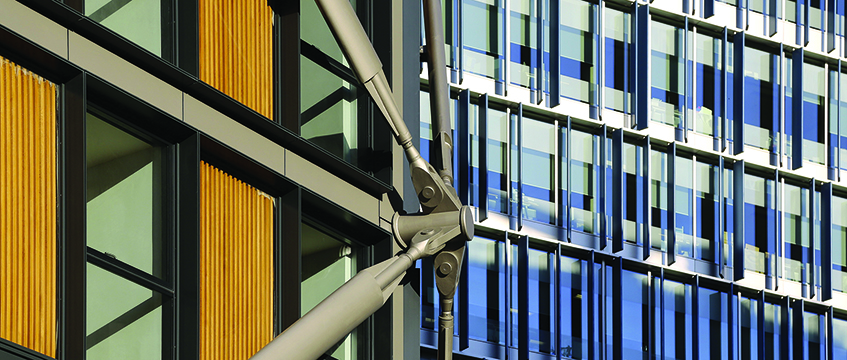Residents of a luxury development near the Tate Modern have failed in a bid to secure a High Court injunction against the art gallery, through which it hoped to stop visitors from using part of a viewing platform they say has turned their homes into a “public exhibit”.
The judge said that, by living in flats with floor-to-ceiling windows, residents of multi-million-pound flats at Neo Bankside at Holland Street, SE1, had created a “self-induced incentive to gaze”.
Five of the residents – Giles Duncan Fearn, Gerald Kraftman, Ian McFadyen, Helen McFadyen and Lindsay Urquhart – sued the Tate Gallery over the section of the platform that offers a clear view of their homes.
However, High Court judge Mr Justice Mann today announced that he had dismissed the claim. He said: “I have rejected the claim in privacy and I have rejected the claim in nuisance.”
He refused the residents permission to appeal, but it remains open to them to seek to persuade the Court of Appeal to hear the case.
Material intrusion
In his judgment today, he accepted that the behaviour of visitors to the “viewing terrace” was a material intrusion into the privacy of the flats and, in a landmark ruling, found that breach of privacy could lead to an actionable nuisance claim in an appropriate case.
In this case, however, he felt that the tenants and the developers of Neo Bankside had “created or submitted themselves to a sensitivity to privacy” by purchasing apartments with floor to ceiling windows. He said: “It would be wrong to allow this self-induced incentive to gaze, and to infringe privacy, and self-induced exposure to the outside world, to create a liability in nuisance.”
Natasha Rees, partner and head of property litigation at Forsters, who acted for the five residents, said: “Whilst we are pleased that the law of nuisance has been expanded permitting a breach of privacy to lead to a nuisance claim, we are extremely disappointed with today’s result.
“The limited steps taken by the Tate to prevent visitors viewing into my clients’ apartments are ineffective and both my clients and their families will have to continue to live with this daily intrusion into their privacy. We are considering an appeal to the Court of Appeal.”
The viewing platform, part of an extension to Tate Modern named the Blavatnik Building, has been open to the public since June 2016. The walkway on the 10th floor offers panoramic views of London – but also allows people to stare right into the adjacent Neo Bankside flats.
Article 8 rights
The residents claimed this is an unreasonable interference in their enjoyment of their property, a “nuisance” and an interference with their right to respect for their private and family lives under Article 8 of the European Convention on Human Rights.
They argued that, from a significant part of the viewing platform, there is “little to view apart from Neo Bankside”, which means that visitors inevitably have their eyes drawn to their luxury homes.
According to their written particulars of claim, “when the viewing platform is open to the public, a near constant stream of vistors subject the claimants’ flats (and other flats in Neo Bankside) to prolonged, and a high degree of, visual scrutiny”.
This, they argued, includes use of binoculars or phones or cameras with zoom lenses, with resulting photographs or films posted on social media sites.
The particulars add that the claimants and their families are subjected to near-constant “surveillance” when they are in their flats, turning them into “something akin to a public exhibit”.
To send feedback, e-mail jess.harrold@egi.co.uk or tweet @estatesgazette








